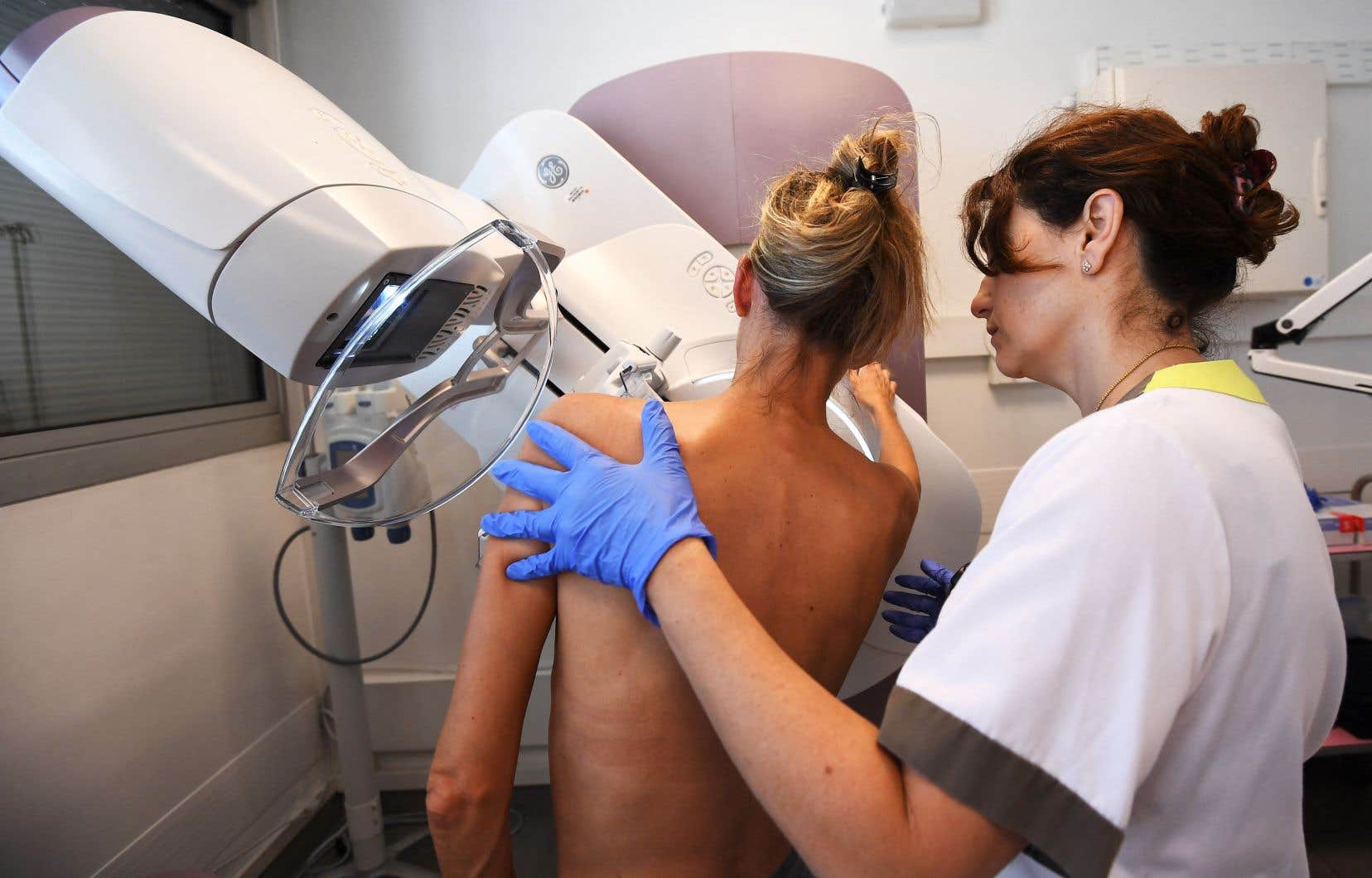The Canadian Task Force on Preventive Health Care (CTFPHC) is going against the grain with its new recommendations on breast cancer screening. Unlike its American counterpart, it does not recommend “systematic screening” among women aged 40 to 49. He believes that forty-year-olds who wish to have a mammogram “after having been informed of the benefits and harms” should be able to do so every two or three years.
The independent group – notably made up of general practitioners, a medical oncologist, a radiation oncologist, an oncology surgeon and patient partners – published on Thursday an update of its provisional recommendations concerning cancer screening of the breast. Expected guidelines, since calls to offer mammography from the age of 40 are increasing in the country. Three weeks ago, the Canadian Cancer Society “urged” provinces and territories to lower eligibility for screening programs to this age for people with average risk (no family history, genetic mutations, etc.). Ontario will move forward next fall.
If 1000 women aged 40 to 49 are screened over 10 years, we will have at most one less woman who will die of breast cancer because she was screened.
To issue its new recommendations, the GECSSP says it has carried out a “comprehensive review of the evidence from more than 165 studies”, including recent observational studies, randomized controlled trials and mathematical modeling.
” Profits [du dépistage], deaths avoided by breast cancer, gradually increase through age. They are really weaker in their forties,” says the president of the GECSSP, Dr.D Guylène Thériault. “If 1000 women aged 40 to 49 are screened over 10 years, we will have at most one less woman who will die of breast cancer because she was screened,” she maintains.
Among these 1000, 368 will have to undergo additional imaging and 55, biopsies, due to a false positive (a first positive result which ultimately turns out to be negative), indicates the GECSSP. Added to this are two cases of “overdiagnosis” – “indolent cancers, which do nothing”, specifies the DD Thériault.
“We often hear that [que] “if we screen more, we will reduce the [cas de] advanced stages,” says the family doctor. However, according to the GECSSP, there is “no study” making it possible to compare the benefits of screening in this area when it begins at age 40 rather than at age 50.
The working group undertook a modeling exercise. “We found that if we screen women from the age of 40 every two years and follow them until they die, compared to 50 years until they die, we have a [cas de] stage 3 less,” reports the DD Thériault.
Why different recommendations?
But how can we explain such a difference between the recommendations of the GECSSP and those of its American counterpart? Since April 30, the United States Preventive Services Task Force, an independent group of experts, has recommended breast cancer screening every two years starting at age 40.
The DD Thériault responds that this is “in part” due to differences between the populations of the United States and Canada. She adds that unlike the American organization, the GECSSP reviewed 82 studies relating to “the values and preferences” of patients. “Women in their forties in these studies, when we present them with a scenario that resembles the numbers we have [les décès évités, le nombre d’imageries supplémentaires subies, etc.]the majority of them do not want to be screened,” she says.
By weighing up the “benefits” of screening, the “deleterious effects” and the “values and preferences of patients”, the GECSSP comes to the conclusion that it cannot decree that systematic screening is required from 40 years. “We should not, based on our interpretation of the evidence, simply say: ‘Yes, everyone, go get tested,’” says the DD Thériault. “If a woman has had the information in a way that she can understand and she says ‘yes, that corresponds to my thought process and how I feel about it,’ she should have access to mammography. »
The GECSSP suggests that women aged 50 to 74 have a screening mammogram every two to three years. He believes that “fair and transparent information” must be provided to patients so that they can weigh the “for” and “against”. “We often hear that screening reduces mortality by 50%,” says the DD Thériault. “Reducing mortality by 50%, it depends on what figure we start with. If we take 1000 women in their forties, over 10 years, two of them will die of breast cancer. 50% less, that’s one woman in 1000.”
For the first time, the GECSSP invites the population to comment on its provisional recommendations on its website. “If someone wants to share with us such a study, such data, we will certainly look at it with interest,” said its president.
The DD Thériault also appeals to women. If they discover a lump on one breast, they must consult: “If you have a lump, it’s not screening! It’s a diagnosis. No matter the age, you have to take care of it. »
In Canada, one in eight women will be diagnosed with breast cancer during their lifetime.
